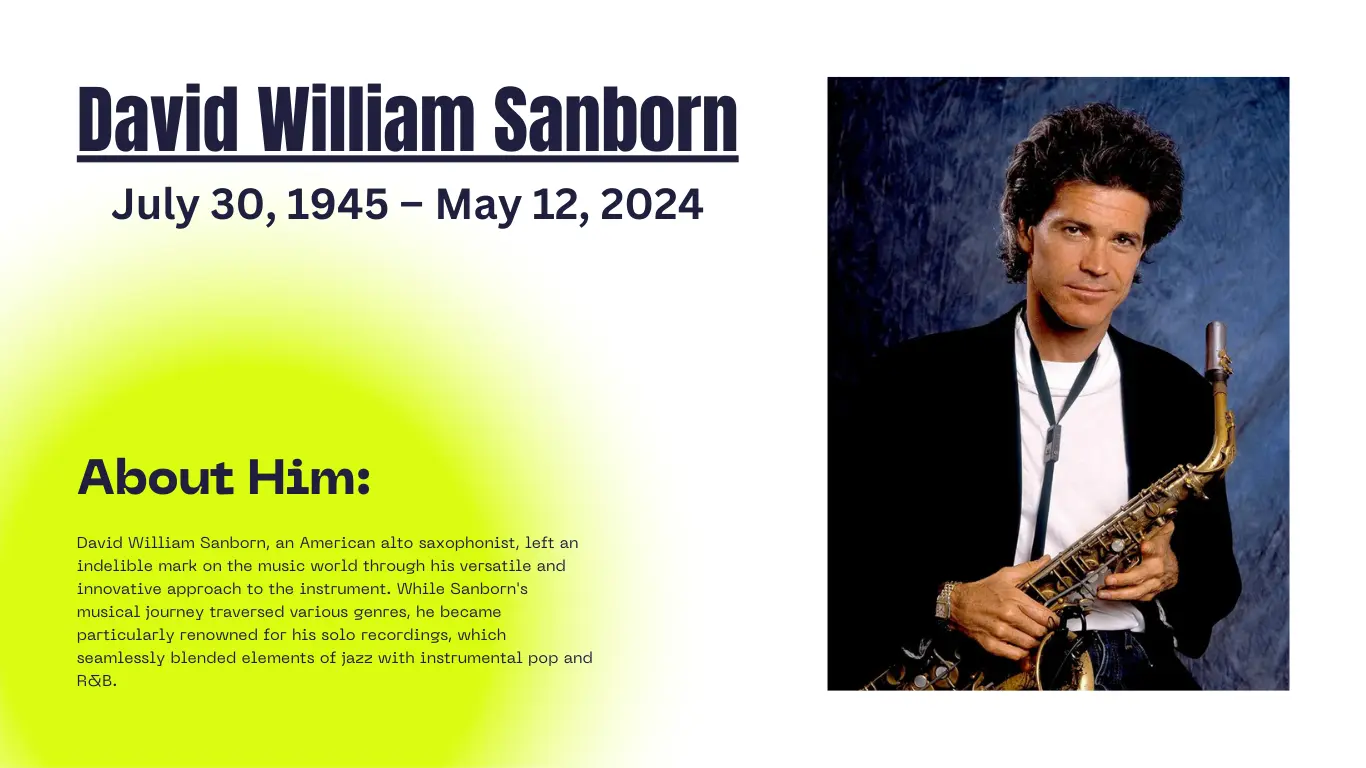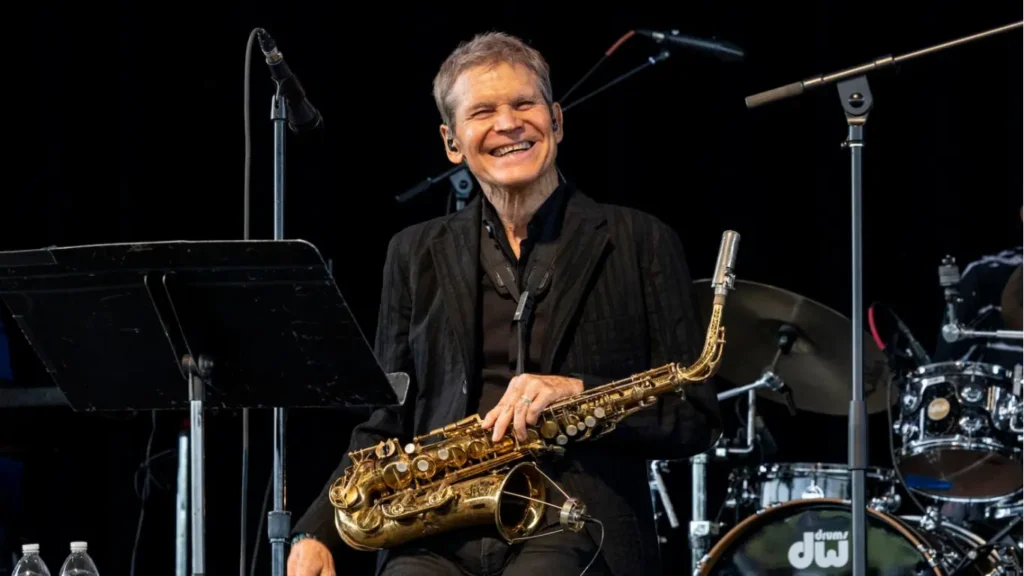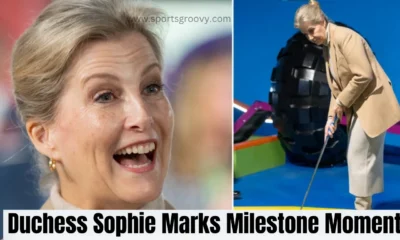Celebrity
David Sanborn, American Alto Saxophonist, Died at Age 78

David Sanborn, a famous saxophonist known for his smooth jazz style, passed away in Tarrytown, New York, on a Sunday afternoon. A representative confirmed the sad news to Rolling Stone magazine. According to a message on Sanborn’s social media, he faced complications from a long fight with prostate cancer. He was 78 years old.
Sanborn’s musical career was illustrious. He lent his saxophone skills to recordings by iconic artists such as Stevie Wonder, James Brown, and Carly Simon. Additionally, he had the privilege of performing live with legendary figures like David Bowie and the Rolling Stones.
Throughout his life, Sanborn’s saxophone melodies resonated with audiences worldwide, leaving an indelible mark on the world of music. His contributions to the genre of smooth jazz and his collaborations with renowned musicians. Which ensured his legacy would endure for generations to come.
A message shared on the musician’s social media page confirmed the sad news. It is revealing that David Sanborn had been fighting prostate cancer for the past few years. Despite his health battle, Sanborn continued his usual busy schedule of concerts until recently. The message mentioned that he even had concerts planned well into 2025.
David Sanborn was hailed as a pivotal figure in both pop and jazz music. Many credited him with revitalizing the presence of the saxophone in rock and roll. His impact on the music industry was profound, leaving an enduring legacy that influenced countless artists and listeners alike.
Sanborn’s Career:
At just 14 years old, David Sanborn showcased his musical talent by performing alongside blues legends Albert King and Little Milton. His journey into the blues genre continued when he joined the Paul Butterfield blues band in 1967.
As part of the band, Sanborn contributed his skills as both a horn section member and a soloist. Over the span of four years, from 1967 to 1971, he recorded on four albums with Butterfield.
One of the notable highlights of Sanborn’s early career occurred on the early morning of Monday, August 18, 1969. When he took the stage with the band at the Woodstock Music Festival in Bethel, New York. This iconic event solidified his presence in the music world and marked a significant milestone in his burgeoning career.
In 1972, David Sanborn’s musical prowess reached new heights when he contributed his saxophone skills to the track “Tuesday Heartbreak” on Stevie Wonder’s acclaimed album, Talking Book. His collaboration with Wonder further solidified his reputation as a formidable talent in the music industry.
The year 1975 marked another milestone for Sanborn as he lent his talents to two significant projects. Firstly, he collaborated with David Bowie on the album Young Americans, showcasing his alto saxophone prowess on the record.
Additionally, he contributed his musical talents to James Taylor’s rendition of “How Sweet It Is (To Be Loved by You)” on the album Gorilla. Further establishing his prominence in popular music circles.
As the mid-70s unfolded, Sanborn delved deeper into the burgeoning jazz fusion scene. By finding himself drawn to its electrifying energy and innovation. He joined the Brecker Brothers band, where he found inspiration from the legendary saxophonist Michael Brecker.
It was during this time that Sanborn recorded his debut solo album, Taking Off, alongside the Brecker Brothers. Regarded as a jazz/funk classic by contemporary standards, this album showcased Sanborn’s distinctive alto saxophone voice and cemented his status as a notable figure in the genre.
Despite being primarily known for his contributions to smooth jazz, David Sanborn’s musical journey began with a foundation in free jazz. In his youth, he studied under saxophonists Roscoe Mitchell and Julius Hemphill, immersing himself in the avant-garde sounds of the genre.
In a poignant nod to his roots, Sanborn revisited the world of free jazz in 1993 when he appeared on Tim Berne’s Diminutive Mysteries album, a project dedicated to Julius Hemphill. This collaboration allowed Sanborn to explore the experimental and boundary pushing elements of his musical background once again.

Additionally, his album Another Hand showcased his willingness to collaborate with avant-garde musicians, further demonstrating his versatility as an artist.
In 1985, Sanborn embarked on a memorable musical journey alongside the renowned vocalist Al Jarreau. The duo performed two sold-out concerts at Chastain Park in Atlanta, captivating audiences with their electrifying performances. This collaboration highlighted Sanborn’s ability to transcend genres and connect with audiences across various musical landscapes.
David Sanborn emerged as one of the most commercially successful American saxophonists of the modern era, particularly gaining prominence since the 1980s. Critic Scott Yanow hailed him as “the most influential saxophonist on pop, R&B, and crossover players of the past 20 years,” underlining his significant impact on contemporary music.
Despite his association with radio-friendly smooth jazz, Sanborn expressed a reluctance towards the genre and his affiliation with it. While he undoubtedly left an indelible mark on smooth jazz, his musical interests and influences extended far beyond its confines.
Throughout his career, Sanborn continually pushed musical boundaries and explored various genres, demonstrating his versatility and creativity as an artist.
David Sanborn’s Musical Gear:
David Sanborn, renowned for his captivating saxophone performances, notably favored the Selmer Mark VI alto saxophone. This instrument became synonymous with his signature sound and played a pivotal role in shaping his musical identity.
During the early 1980s, Sanborn forged an endorsement deal with Yamaha, a prominent manufacturer of musical instruments. As part of this partnership, he prominently featured Yamaha saxophones on his albums, including “As We Speak” and “Backstreet.”
One notable instance of Sanborn showcasing his Yamaha saxophone occurred at the prestigious Montreux Jazz Festival in 1981. Concert footage from this event captures him passionately playing the Yamaha instrument. Further solidifying his association with the brand and showcasing its quality and performance capabilities.
In an interview with DownBeat magazine in April 1988, David Sanborn disclosed his saxophone preferences, shedding light on the instruments that shaped his distinctive sound. Sanborn expressed a strong affinity for Selmer Mark VI alto saxophones, particularly favoring those within the 140,000-150,000 serial number range, all manufactured in 1967.
This specific vintage of the Selmer Mark VI held a special place in Sanborn’s heart, contributing to the richness and depth of his musical expression.
Throughout the late 1970s and beyond, Sanborn entrusted his saxophone’s mouthpiece to the craftsmanship of Bobby Dukoff. The mouthpieces crafted by Dukoff provided Sanborn with the tonal clarity and responsiveness essential to his playing style.
In later years, Sanborn transitioned to using mouthpieces designed by Aaron Drake. These mouthpieces, tailored to Sanborn’s preferences and playing techniques, offered a seamless blend of versatility and precision, allowing him to continue delivering captivating performances characterized by his unmistakable saxophone voice.
David Sanborn’s Awards and Honors:
- Grammy Awards: Throughout his illustrious career, David Sanborn garnered significant recognition in the form of six Grammy Awards. His exceptional musical talents and contributions were honored with prestigious Grammy accolades.
- Gold and Platinum Albums: Sanborn’s musical achievements extended beyond critical acclaim, earning him commercial success as well. He boasted an impressive collection of eight gold albums and one platinum album, a testament to his widespread appeal and enduring popularity among music enthusiasts worldwide.
- Grammy-Winning Albums: Among his Grammy Awards, notable victories included recognition for his albums:
- Voyeur (1981)
- Double Vision (1986)
- Close Up (1988) – an instrumental album that showcased Sanborn’s virtuosity and mastery of the saxophone.
- Induction into the St. Louis Walk of Fame: In 2004, David Sanborn received a prestigious honor when he was inducted into the St. Louis Walk of Fame. This recognition underscored his significant contributions to the world of music and solidified his legacy as one of the most influential figures in contemporary jazz and popular music.
David Sanborn’s numerous awards and honors serve as a testament to his remarkable talent, enduring impact, and lasting legacy in the realm of music.
-

 Soccer5 months ago
Soccer5 months agoDutch Fans in Blackface to Imitate Ruud Gullit, One Agrees to Stop
-

 Soccer5 months ago
Soccer5 months agoEx Glamour Model Says Party with England Team Before Euros
-

 News7 months ago
News7 months agoDubai Flood, Rain Turns Desert to Aquarium🌧️🐠
-

 Soccer5 months ago
Soccer5 months agoArgentina vs Peru 2-0 Highlights & All Goals Copa America 2024
-

 NBA5 months ago
NBA5 months agoCelebrate with the Boston Celtics: Parade and Traffic Updates
-

 Soccer5 months ago
Soccer5 months agoVinicius Jr Scores Two Goals in Brazil’s Win Vs Paraguay in Copa America 2024
-

 Soccer5 months ago
Soccer5 months agoUEFA EURO 2024: Essential Guide and Key Information
-

 Entertainment6 months ago
Entertainment6 months agoThe Try Guys’ Journey From Four to Two














Pingback: Alice Munro, Literature Nobel Prize Winner, Died at Age of 92 - Sports Groovy